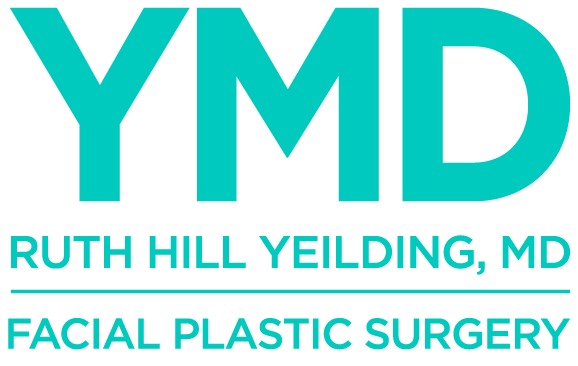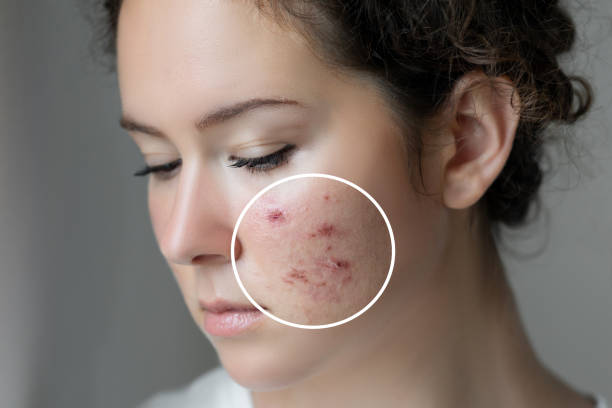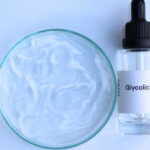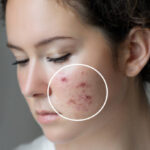Acne scars are more than just marks on your skin. They can chip away at your confidence and constantly remind you of battles you thought you’d already fought. If you’ve ever stood in front of the mirror, wondering if your skin will ever look smooth again, you’re not alone.
And chances are, if you’ve been looking for real solutions, you’ve come across microneedling.
But does it really work for acne scars? Is it painful? How many sessions do you need? In this blog, we’ll dive into what microneedling is, how it helps with acne scars, and why so many people—dermatologists, celebrities, and everyday folks—swear by it.
First, What Is Microneedling?
Microneedling, also known as collagen induction therapy, is a skin treatment that uses tiny, fine needles to create controlled micro-injuries on the skin’s surface. It might sound a little intimidating, but here’s the science behind it:
These micro-injuries stimulate your body’s natural wound healing process, which includes:
- Collagen production (the stuff that keeps your skin firm and smooth)
- Elastin regeneration (for bounce and texture)
- Cell turnover (to reveal fresher, newer skin)
The result? Smoother skin, improved texture, and yes—a noticeable reduction in acne scars.
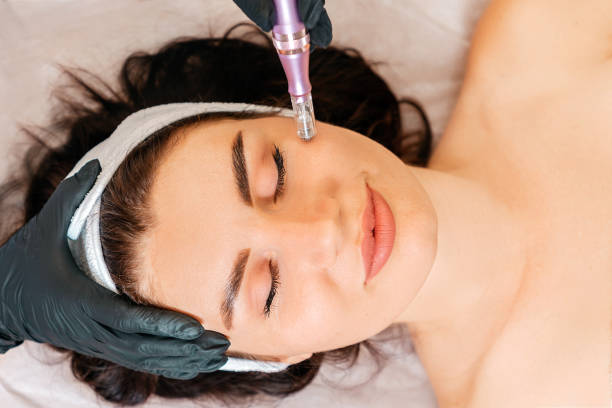
Why Microneedling Works for Acne Scars?
Acne scars are usually formed when a breakout penetrates deep into the skin and damages the tissue beneath. These scars can appear as pits (atrophic), raised areas (hypertrophic), or pigmented spots.
Microneedling works by breaking up old scar tissue and stimulating the production of collagen and elastin, which fill in the pitted scars and smooth out the skin’s surface.
Here’s what microneedling can improve:
✅ Ice pick scars
✅ Boxcar scars
✅ Rolling scars
✅ Pigmentation from old acne
✅ Overall texture and skin tone
What Happens During a Microneedling Session?
Let’s walk through it, step by step—because knowing what to expect can make all the difference.
Step 1: Consultation
A trained professional will assess your skin, identify your scar types, and create a treatment plan. They’ll also check if microneedling is suitable for your skin (it usually is, unless you have active breakouts or certain skin conditions).
Step 2: Numbing Cream
Before the procedure begins, a topical numbing cream is applied to your skin to minimize any discomfort.
Step 3: Microneedling Device in Action
Using a pen-like device (with sterile microneedles), your provider will gently move the device across your face. It may feel like a vibration or a tickle—most people describe it as mildly uncomfortable, but very manageable.
Step 4: Aftercare and Recovery
Your skin might be red and a little sensitive—think a mild sunburn—for a day or two. Some flaking or dryness can happen, but downtime is minimal.
How Many Sessions Will You Need?
Microneedling isn’t a one-and-done treatment, especially for acne scars.
👉 Most people need 3–6 sessions, spaced 4–6 weeks apart for best results.
👉 Deeper scars may require more sessions—or even combination treatments with PRP (platelet-rich plasma) or radiofrequency (RF) microneedling for faster collagen rebuilding.
What Results Can You Expect From Microneedling Treatment?
Here’s what real people experience:
✨ After 1 session: Skin looks slightly firmer and more radiant.
✨ After 3 sessions: Texture improves, scars start to fade, and makeup sits better.
✨ After 6 sessions: Noticeable reduction in pitted scars, smoother skin, and fewer pigmented marks.
And here’s the beautiful thing—it’s not just a temporary fix. Results keep improving for months after your final session, as your skin continues to produce new collagen.
Microneedling vs. Other Acne Scar Treatments
Let’s be honest—acne scar treatments are everywhere. So how does microneedling compare?
| Treatment | Downtime | Suitable For | Cost Per Session | Effectiveness |
| Microneedling | Low (1–3 days) | All skin tones | Moderate | High (for scars & texture) |
| Laser Resurfacing | 5–10 days | Lighter skin tones | High | Very high |
| Chemical Peels | 3–7 days | Surface scars | Low–Moderate | Moderate |
| Fillers (for deep scars) | Minimal | Depressed scars | High | Temporary |
Microneedling is often preferred because it works on all skin tones, has minimal downtime, and doesn’t involve chemicals or heat, which means fewer risks of pigmentation or burns.
Is Microneedling Safe?
When performed by a licensed and experienced professional, microneedling is safe and effective. Side effects are usually mild and include:
- Redness
- Mild swelling
- Temporary dryness or flaking
Avoid DIY rollers at home—they’re not sterile and can lead to infections, scarring, and poor results. Always go to a certified skin clinic or dermatologist.
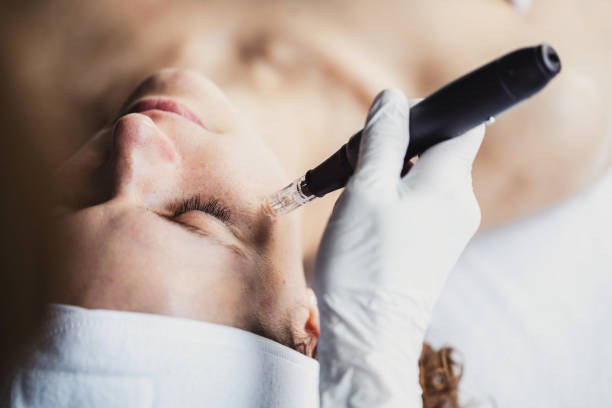
What About Microneedling with PRP?
Also known as the “vampire facial,” this combo treatment uses your own blood’s platelet-rich plasma (PRP) along with microneedling. The PRP enhances healing and boosts collagen production even further.
👉 Great for: Deeper scars, faster results, and skin rejuvenation
👉 Slightly higher cost, but many say it’s worth the extra glow and improvement
Aftercare Tips for Best Results
After microneedling, your skin is in healing mode. Here’s how to support it:
- Use a gentle, hydrating cleanser
- Apply soothing serums like hyaluronic acid
- Avoid makeup for 24 hours
- Stay out of the sun & apply SPF religiously
- No exfoliants or retinols for 5–7 days
Treat your skin like it’s healing—because it is.
Should You Try Microneedling for Acne Scars?
If you’ve tried every product and filter, and you’re still unhappy with your acne scars, microneedling might be the game-changer you’ve been waiting for.
It doesn’t promise overnight miracles—but it does offer real, visible, lasting improvement.
And the best part? You’re not just healing your scars—you’re rebuilding your confidence, one session at a time.
